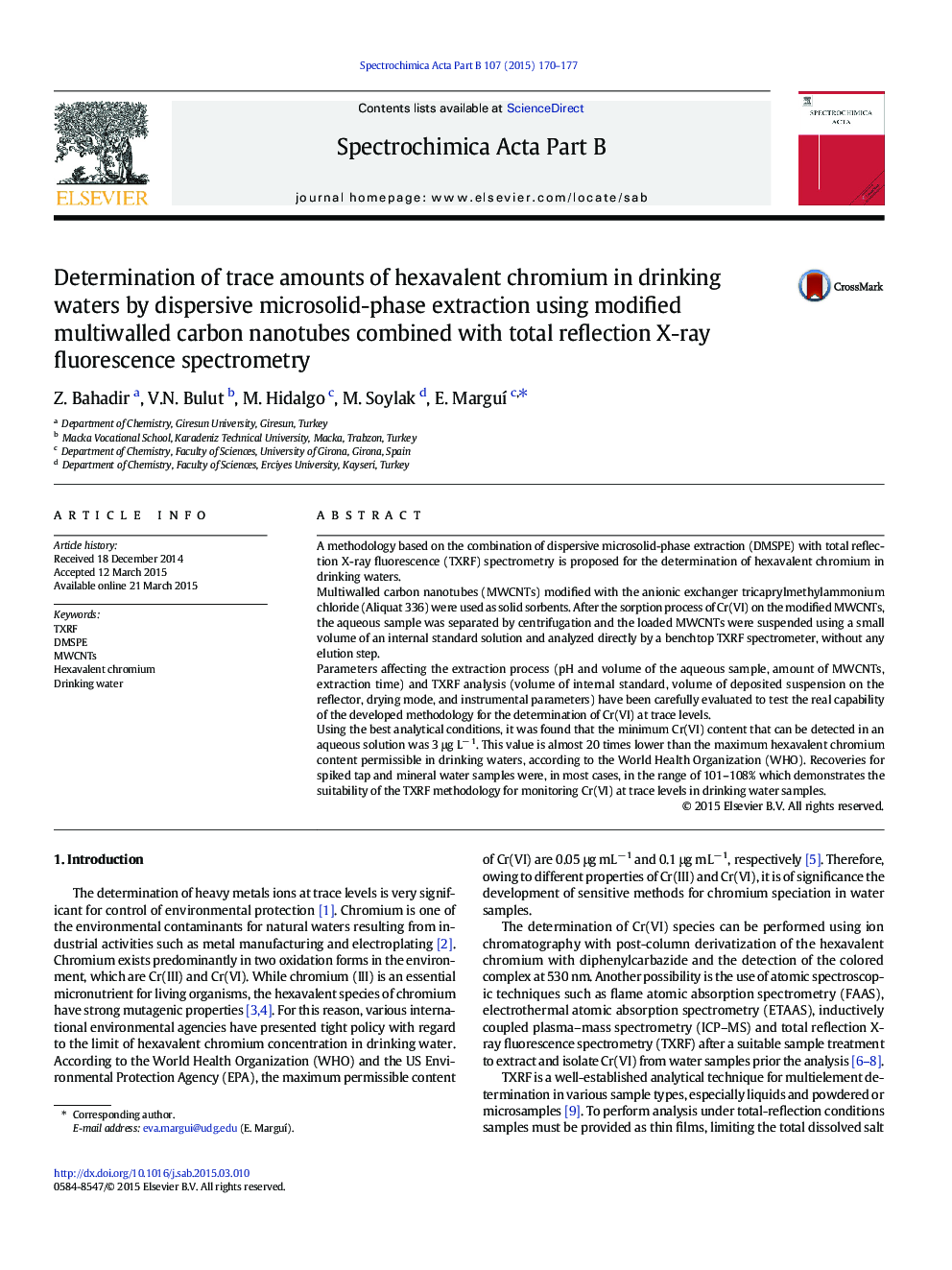| Article ID | Journal | Published Year | Pages | File Type |
|---|---|---|---|---|
| 1239634 | Spectrochimica Acta Part B: Atomic Spectroscopy | 2015 | 8 Pages |
•A method using DMSPE and TXRF is proposed for Cr(VI) determination in water.•CNTs modified with a commercial anionic exchanger are used for the DMSPE.•The detection limit for hexavalent chromium is 3 μg L− 1.•Accuracy and precision are suitable for the analysis of tap and mineral waters.
A methodology based on the combination of dispersive microsolid-phase extraction (DMSPE) with total reflection X-ray fluorescence (TXRF) spectrometry is proposed for the determination of hexavalent chromium in drinking waters.Multiwalled carbon nanotubes (MWCNTs) modified with the anionic exchanger tricaprylmethylammonium chloride (Aliquat 336) were used as solid sorbents. After the sorption process of Cr(VI) on the modified MWCNTs, the aqueous sample was separated by centrifugation and the loaded MWCNTs were suspended using a small volume of an internal standard solution and analyzed directly by a benchtop TXRF spectrometer, without any elution step.Parameters affecting the extraction process (pH and volume of the aqueous sample, amount of MWCNTs, extraction time) and TXRF analysis (volume of internal standard, volume of deposited suspension on the reflector, drying mode, and instrumental parameters) have been carefully evaluated to test the real capability of the developed methodology for the determination of Cr(VI) at trace levels.Using the best analytical conditions, it was found that the minimum Cr(VI) content that can be detected in an aqueous solution was 3 μg L− 1. This value is almost 20 times lower than the maximum hexavalent chromium content permissible in drinking waters, according to the World Health Organization (WHO). Recoveries for spiked tap and mineral water samples were, in most cases, in the range of 101–108% which demonstrates the suitability of the TXRF methodology for monitoring Cr(VI) at trace levels in drinking water samples.
